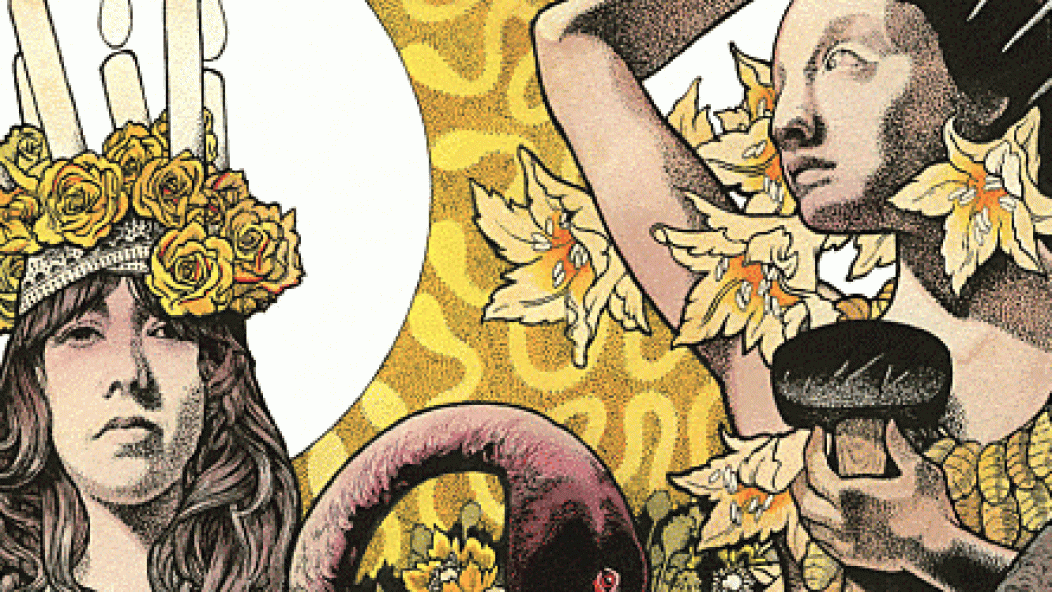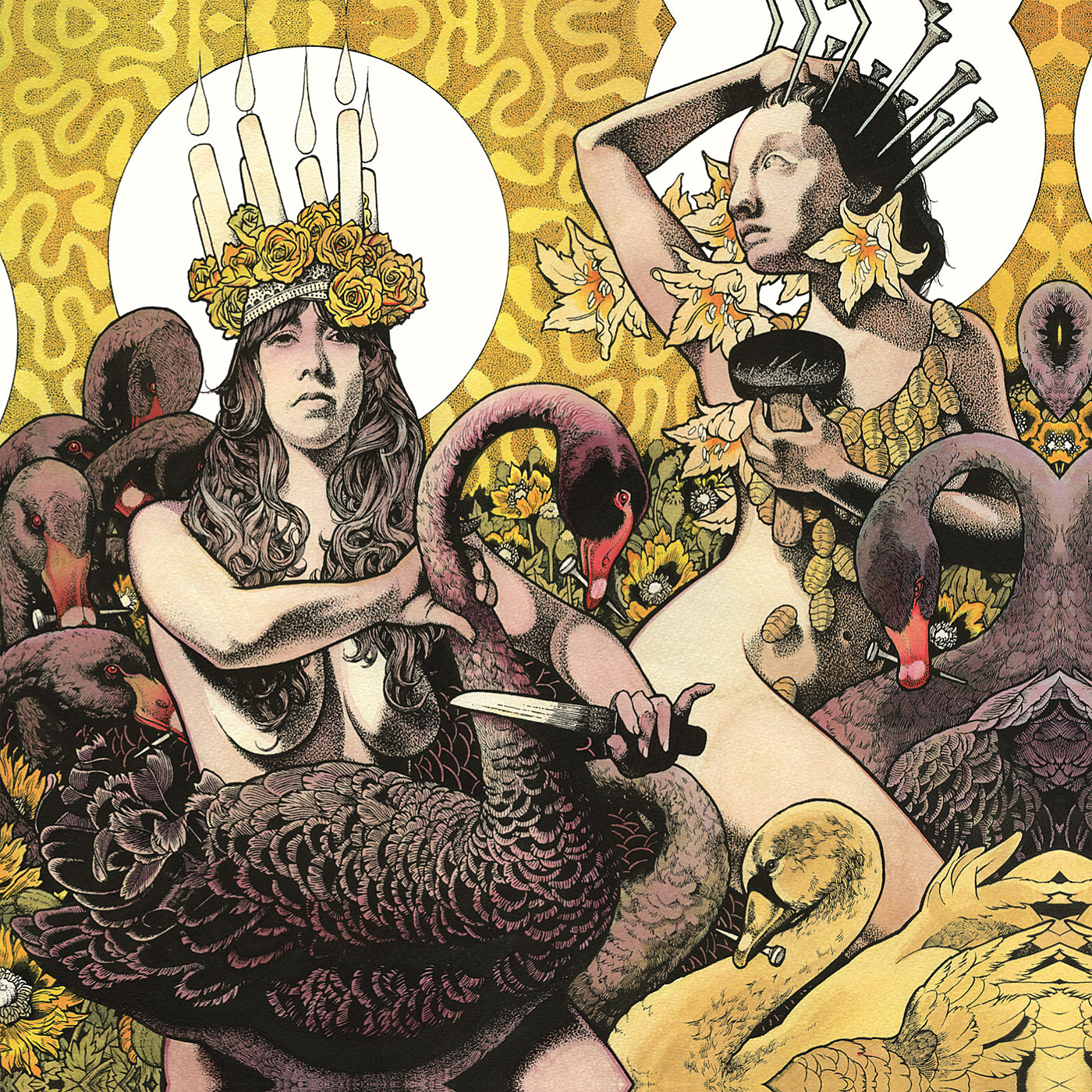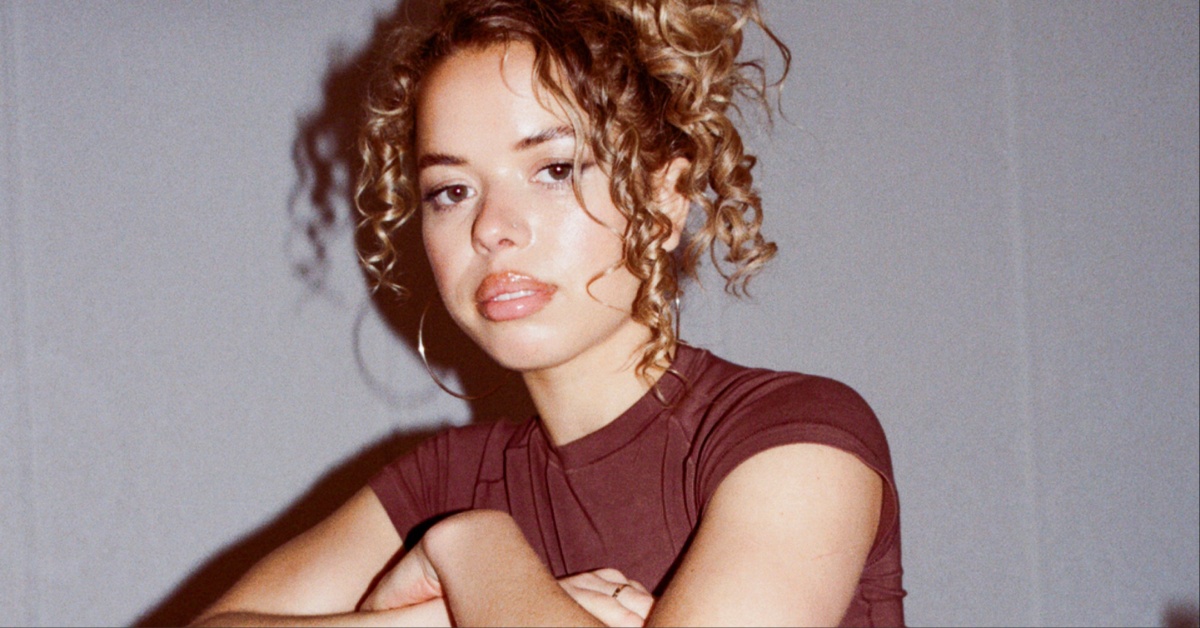
Kramer v. Kramer: Baroness - Yellow & Green
. . .
Baroness elicit strong opinions, whether it’s the heaps of praise for the Blue Record, or the small but steady stream of hate they got after abandoning the sound of the early EPs on the Red Album. As each album marks a significant progression and change in tone, excitement and disappointment are natural responses. Our own Beth Winegarner is a longtime fan of the band; she recently sat down with Natalie Zina Walschots (also known as Natalie Zed) to discuss the latest Baroness album—their sprawling, melodic double-disc, Yellow & Green.
. . .
Beth Winegarner: When I first fell in love with Baroness’s music, it was in spite of their progressive leanings. There was something about the songcraft – the way they use melody and rhythm, particularly – that hooked me deeply. Joseph Schafer, a fellow Invisible Oranges writer, recently wrote, “Metal bands, especially ones with no punk background, rarely grasp the fundamentals of punchy songwriting.” Given Baroness’s punk roots, maybe that explains it.
The band’s first two EPs are so massive and immediate. The Red Album reached in a more melodic direction, but lost little of that intensity. On Blue Record, something was missing; it was as if they were holding back. Yellow & Green explains why. They wanted to embrace more traditional song structures, but didn’t want to screw around with the formula on Red that had earned them so much attention. So you get songs like “Jake Leg”, which just sound off.
On Yellow & Green, you can practically hear the band saying, “Fuck it all, let’s make the album we’re dying to make.” You hear the same abandon you heard on those first two EPs. It’s glorious.
Natalie Zina Walschots: When I first fell in love with Baroness’s music, it was because of their progressive tendencies. While they relied on the melodic structures of their songs to serve as a kind of anchor, they were never afraid to explore and innovate, to spiral out as far from that musical core as they could. They pulled against the expected and the predictable, the easy and the merely pleasant. In the beginning, especially on their first two EPs, they reminded me of nothing so strongly as the first three lines of William Butler Yeats’ poem “The Second Coming”:
Turning and turning in the widening gyre
The falcon cannot hear the falconer;
Things fall apart; the centre cannot hold
I was expecting them to eventually break loose from the anchor to which they had attached themselves, to build up enough creative velocity to rip free. On the Red Album, there was the ghost of the blood-dimmed tide that they’d promised to unleash, but more melodic and restrained. Blue Record was more promising: for all its softness, it was still massive. The focus was again the structure of the songs, and it seemed that Baroness were attacking their musical architecture with songcrafting siege engines, hammering the songs into shape. That album was still brooding and complex enough to start slouching towards Bethlehem. I was sure that the next album would be the monster I was expecting.
Then came Yellow & Green, and for the first time I heard a kind of self-imposed restraint that limited and held back, instead of enhanced. This was the constraint of shackles. Yellow & Green sounds like the album they had to make.
. . .
http://www.youtube.com/watch?v=kFjnpKt1tCA
Baroness –
“March to the Sea”
. . .
BW
I agree with you that Baroness’s music has historically had this wonderful tension between structure and chaos. Another thing that kept them from being “too prog” for me was that sense that their music was always on the verge of going off the rails in some gorgeous, splintering wreck.
I find it interesting that on Yellow & Green, you hear restraint. One of the most striking things about the new Baroness material is the change in John Baizley’s lyrics. Until now, they were abstract bits of poetry, typically in the third person. But on Yellow & Green, they’re relatively naked, confessional portraits of how messy it is to be human, particularly on “Cocanium”, “Eula”, and “Collapse”. These songs are impressionistic, but no longer abstract. And far less restrained.
The fact that you can actually hear the lyrics is brilliant. John’s actually singing now, in harmony with Pete Adams. You’re humming along to an irresistible vocal line, and then you realize you’re singing, “‘This apple makes me sick’ / Cries the pig upon his stick / ‘It’s my own blood’.”
NZW
I agree with you on one major point here: the lyrics are far and away the finest I have ever heard on a Baroness record. The words themselves are intimate, and performed with a desperate tenderness that really got to me. “Collapse” in particular really hit home, and the almost-in-tears (yet still powerful) quality of “Take My Bones Away” is wonderful.
The thing is, I don’t think the music matches it. Where the lyrics are powerful, the music is (while certainly detailed, layered, lush, and complex by turns) often delicate to the point of being timid. It’s like a torn-out heart served on a fine piece of china, surrounded by a doily.
. . .
Baroness –
“Take My Bones Away”
. . .
BW
It’s funny, because “A torn-out heart served on a fine piece of china, surrounded by a doily” reminds me of Baroness’s artwork: you have all these delicate flowers, bird feathers, fine lace dresses — and then you have skulls, eyeballs, swans being beheaded or impaled, teeth falling out, and so on. Baroness have always been about the juxtaposition of the sublime and the gruesome, in their art as well as their music, and to me the material on Yellow & Green is right in line with that mission.
One of the things I really love about this album is that, despite how much the band has wandered from the sound you hear on earlier records (particularly the first two EPs), you can still tell it’s a Baroness record. It sounds authentically like them. They really inhabit these songs, from rhythm to vocals to lyrics. That’s what I hear. I don’t hear any compromises. But you’re saying you hear restraint, even shackles. If that’s the case, what do you think would motivate them to hold back?
NZW
I think you really just nailed something: that Baroness’s music (and this is echoed in the artwork that accompanies it) has always been about the juxtaposition of the grotesque and the sublime.
I feel as though they have made a choice; that they chose to upset the balance between these two concepts, to destroy the tension and instead choose one over the other. The ache of the grotesque still throbs in Yellow & Green, but it no longer has the tension that it once did. I love things that are both beautiful and ugly, but Baroness have chosen to align themselves with prettiness – and the ugly part of me mourns the loss.
In choosing to pursue the sublime over the grotesque through their art, Baroness have made the decision to tie themselves down. I sincerely believe they were going for simplicity and clarity of vision in terms of the music, but the result, in my opinion, is far too gentle. Even sandpaper, if the grit becomes too fine, can no longer change the face of the surface; with all the roughness removed, it might as well be a silk cloth, soft and lovely but unable to damage and change.
. . .
Have you heard the new Baroness? How does it measure up?
. . .
Baroness –
“Eula”
. . .











